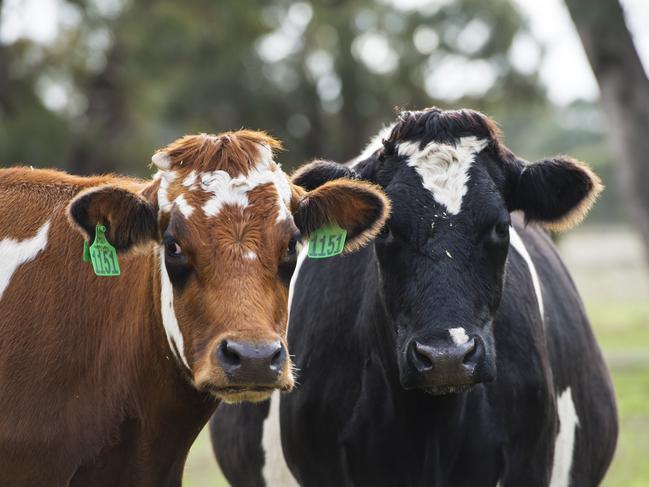Dairy Australia: Australian dairy farmers returns $6.1 billion in 2022-23
Dairy farmgate returns hit $6.1 billion last year, after a 24 per cent jump, but higher costs are putting pressure on profits.
Australia’s dairy farmers are collectively making a farmgate fortune with a billion dollar bonus paid out last financial year.
New data released by Dairy Australia today confirms the national farmgate figure edged close to $6.1 billion in 2022-23, a 24 per cent jump from $4.9 billion in the 2021-22 financial year.
The Australian Dairy Industry in Focus report calculated the average farmgate price at $9.80 per kilogram of milk solids, with a shortage of supply forcing processors to nail down supply.
Dairy Australia industry analyst Isabel Dando said the $6.1 billion farmgate value meant the dairy sector was the third largest rural industry nationally.
She said the vast majority of farmers reported that they made an operating profit, with profitability at an all-time high in some regions.
“We saw historically high farmgate prices over the 2022-23 season, driven by competition for milk supply among processors,” Ms Dando said.
“However, depending on the region, many farmers faced challenging seasonal conditions with floods in parts of NSW, Queensland and Victoria.”
The annual review confirmed Australia’s milk pool fell to a 30-year low last financial year, clocking in at 8.129 billion litres.

The last time the national pool was around that figure was back in the 1994-95 season, when it tallied at 8.2 billion litres.
Dairy Australia’s In Focus report also calculated that 33,500 people were directly employed on dairy farms and by dairy processing companies nationwide in 2022-23 — the equivalent number to the entire population of Victoria’s Warrnambool or Western Australia’s Albany.
The lucrative domestic market has also consolidated the trend away from export.
“Roughly 20 years ago, the milk destined for export was about 50 per cent of all milk produced in Australia,” Ms Dando said. “Today, that export figure is about 30 per cent of all milk produced in 2022-23. That’s been a long-term shift.”
United Dairyfarmers of Victoria president Bernie Free said while the $6.1 billion headline figure appeared attractive on paper, it masked the rising costs of running a dairy farm.
“Anyone who’s paid an electricity bill recently knows they’re paying more than ever,” Mr Free said. “And dairy farms have far bigger power bills than households.
“It’s not just electricity. All inputs are rising, either at inflation or above inflation.
“Chemicals, fertiliser and other incidental products all cost more than they did a year ago.”
Mr Free said labour costs were also galloping this financial year with farmers struggling to attract milkers.
“There’s so few (potential employees) out there that you really have to pay a premium to get workers, and that’s if you get someone,” he said.
“It means farmers aren’t able to work to anywhere near their capacity.”





